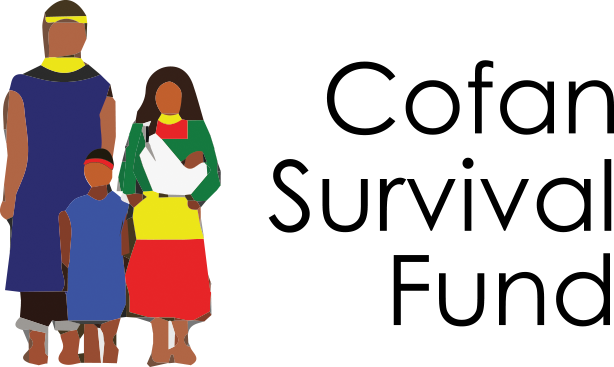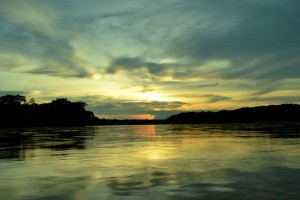Why should you support the Cofan?

With the holiday season almost upon us, we at Cofan Survival Fund are reaching out to our supporters and asking for their help to keep our organization going.
We started formal Cofan conservation activities with almost nothing in the late 1980s, and spent several years doing the best we could with the funds we could access from ecotourism, village collections and the like. As threats escalated and pressures increased, we formalized Cofan Survival Fund in 1999, learned how to access more funding and gratefully accepted help from others outside the immediate Cofan sphere. With this, we became far more effective both in protecting our forests and culture and making a difference for the world.

As funding has become harder for us to access, we have had to make difficult decisions about what to cut and what we can most easily afford to lose, both internally as an indigenous people and as caretakers of a global heritage.But the bottom line is, we can't afford to stop doing what we are doing: we MUST adjust and figure out how to make do. What makes us different from the average NGO is that we don't have the option to quit. We're in this because it means survival for our people, our culture, our forests and our future. I am convinced that it is also an important part of the answer for survival of the globe as we face climate change, water shortages, extreme weather emergencies and the like, and that our contribution to our planet’s sustainability is very important. But as the Cofan, we don't have the luxury of ending conservation activities because we don't have enough funding.

So, we will continue to field as many Cofan rangers as we can afford to protect the most vulnerable locations in the best possible manner we can afford. We will continue collecting Charapa turtle eggs, caring for babies and releasing them into the wild. We will continue sending as many young Cofans as we can to quality schools and universities so they can grow up and take leadership roles for the Cofan Nation.
I want to encourage each of you to be part of the solution. Don’t think of yourself as too far away to be concerned. Take a look at this video to see exactly what your gift will help protect.
Please, become a partner with the Cofan in our mission to save one of the most biodiverse areas on the planet. Make a tax-deductible donation today!
Take care, and thanks for your support!
-Randy







